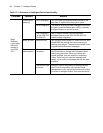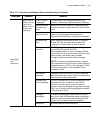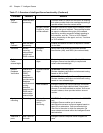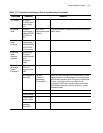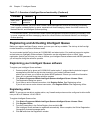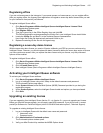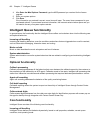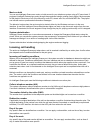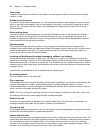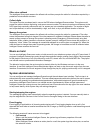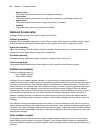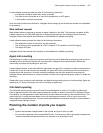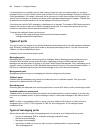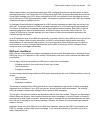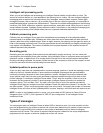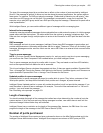418 Chapter 17 Intelligent Queue
Time of day
A specific time period can be defined as a condition. You can specify the start and end times for which the
condition is valid.
Number of calls in queue
If you have Contact Center Management, you can use the total number of calls waiting in a queue or queue
group, at the time the call begins to ring on the Intelligent Queue port, as a condition for applying an action
plan to a call. The system queries Contact Center Management at decision time to determine the current
queue conditions.
Queue waiting times
If you have Contact Center Management, you can use the longest amount of time that a caller has been
waiting in a queue or queue group, at the time the call begins to ring on the Intelligent Queue port, as a
condition for applying an action plan to a call. The system queries Contact Center Management at decision
time to determine the current queue conditions.
Operating mode
The current operating mode of the system or of a port group can be either Normal or Emergency. An
Intelligent Queue administrator can place the call flows in Emergency mode to force all calls on a port to use a
predefined Emergency action plan. This would typically be due to an unforeseen temporary closure of a
contact center, as in the case of a natural disaster.
Incoming call handling action plans (messaging, callback, and routing)
All calls are eventually handled by an action plan. An action plan is a set of call handling instructions that
defines how to manage a specific call. The relationship between conditions and action plans is that conditions
define which action plan is chosen for a specific call. If no conditions are met, a default action plan is used to
handle the call. An action plan begins upon selection and carries a call for the duration of its existence within
Intelligent Queue.
An action plan can be defined as any of the following call handling types:
Do nothing (default)
This is the default type for any action plan.
Play a message
The Intelligent Queue port answers the offered call and plays a predefined .wav file that is determined by the
condition. Messages can be static, prerecorded phrases or complex messages made up of a set of
concatenated phrases. Complex messages can include queue condition values, such as number of callers in
queue, call load, and longest waiting call in queue.
NOTE: This is the only type of action plan that can be used if the port is defined as a RAD port. In this case,
the Intelligent Queue port(s) used to play the RAD would be dedicated.
Redirect the call
The call is not answered and is redirected to a predefined destination. Since the call is not answered, no
message is played to the caller, and the caller is unaware of the redirection.
Transfer the call
The Intelligent Queue port answers the call. Once answered, an optional greeting can be played for the caller
and then the call blind transfers to a predefined destination.
Interact with the caller
This type of action plan uses a predefined Interactive Tree that is configured to offer choices to the caller. The
caller makes their selections using their keypad to navigate to the information or destination that they desire.
You can define each digit on the keypad (0-9,*,#) as an option that can perform any one of the following
functions: play a message, transfer a call, leave a voice callback, collect digits, manage the system, offer a
submenu, go to another choice, repeat the choices, offer Voice callback.



